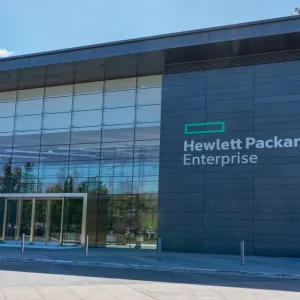Gartner has given the digital world five reasons why businesses need to adopt a modern data centre strategy to avoid losing agility and competitiveness.
The IT research and advisory organisation said "the personality, structure and role of data centres will need to be changed" as it highlighted the changing impact of the Nexus of Forces and the Internet of Things (IoT).
Rakesh Kumar, managing vice president at Gartner, said: "For over 40 years, data centres have pretty much been a staple of the IT ecosystem."
He explained that despite changes in technology for power and cooling, and changes in the design and build of these structures, "their basic function and core requirements have, by and large, remained constant".
"These are centred on high levels of availability and redundancy, strong, well-documented processes to manage change, traditional vendor management and segmented organisational structures. This approach, however, is no longer appropriate for the digital world," Mr Kumar added.
With a make, manage and embrace approach, these were Gartner’s five reasons why data centres need to develop a more appropriate and modern strategy:
1. New approach
Tip: Make the Data Centre Behave More Like a Factory and a Laboratory
Gartner predicted that within five years more than seven billion people and businesses, and close to 35 billion devices, will be connected to the internet forming the greater IoT.
As digital globalisation leads on, data centres will have to adapt to handle a significant increase in the speed and volume of data.
In this sense, data centres will need to behave like theoretical factories with production lines that can scale up to handle ever-increasing volumes of work.
The organisation told data centres to behave like a laboratory, forensically analysing vast amounts of data to provide insight and actions for the business.
Storage solutions will have to churn through huge volumes of data to connect applications and allow for better real-time analytics.
2. Bimodal IT
Tip: Manage the Pressure on the Data Centre to Become Agile and Innovative
There is potential for massive innovation driving significant changes in IT service delivery, as the disruption triggered by digital business is fluid and nonstop.
To cope with these changes, Gartner recommended data centres to become more agile and, at the same time, maintain process-driven integrity and safety of existing systems.
Some companies have already adopted a two modes or speed of IT operation process to which Gartner named "bimodal IT".
Data centre managers will find it increasingly difficult to prove their value, if they do not adapt the mentality and approach of data centres away from continuous stability to managed change and innovation.
As the core engine delivering IT services, the data centre "will need to become far more agile and responsive than it has ever been and operate in a bimodal way".
3. Risk Management
Tip: Manage Different Types of Risk
Data centres will be the focal point of connected devices, as the digital business industry will register an increase in information exchanging rates between gadgets.
So far, data centres have focused on risk management, which is normally associated with downtime, system availability and application-centric breaches.
"Data centre strategies fit for the digital world must have a key focus on a broad approach to risk management," the report said.
A completely new set of service assurance challenges will appear, as no single entity will own availability and performance service levels for the complete end-to-end transaction.
4. Broader connections
Tip: Make the Data Centre Part of a Broader Hybrid Topology
Today, 38% of total IT spend is outside of IT, with a disproportionate amount in digital projects with that figure going beyond 50% by 2017, Gartner predicts.
Traditionally, IT spending has been through IT departments with data centres delivering IT services.
Infrastructure and operations leaders will have to ensure that their internal data centres will be able to connect into a broader hybrid topology.
This will happen as lines of businesses will spend with cloud and third party service providers "if they feel their data centre is either too slow to respond or too closed to new technologies".
5. Prepare ahead
Tip: Embrace New Technologies in a Different Way
Data centres will have to reshape to cope with the host of new technologies that will need to be managed differently.
The operational control of data centres, such as software configurations, standardised operating environments and security patching, will be need by emerging trends, like smartphones and tablets.
As ‘things’ get ever more connected and more data gets generated, the data centre hardware of servers, storage and network equipment itself will change bringing a new order to vendor relationships.
"The digital world is reshaping the vendor landscape and the technologies and vendors that have traditionally been instrumental in strong data centre services are going through changes, meaning I&O leaders will need to reshape their strategy for providing IT services," Gartner said.






